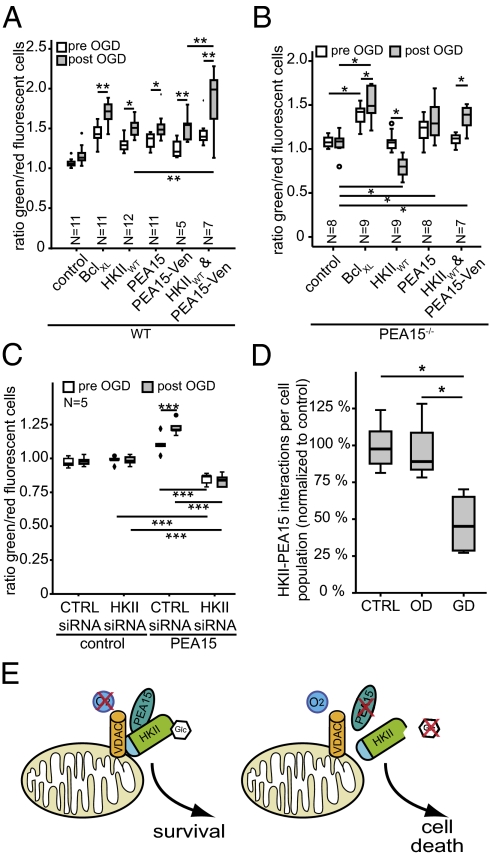Fig. 5.
PEA15 is indispensable for HKII-mediated protection. (A) Overexpression of PEA15 protected wild-type neurons to a similar extent as HKII after OGD. Coexpression of HKII and PEA15-Venus resulted in a synergistic protective effect on neuronal survival in wild-type cells. (B) HKII overexpression induced cell death after OGD in PEA15−/− primary cortical neurons (HKIIWT). Following the reconstitution of PEA15 (HKIIWT and PEA15-Venus), overexpression of HKII again mediated significant protection from hypoxic cell death. PEA15 also mediated protection from OGD when overexpressed in PEA15−/− neurons. (C) Knockdown of endogenous HKII abolished protective effect of PEA15 overexpression in wild-type neurons. (D) HKII/PEA15 interaction is disturbed under GD but not under OD. Number of cells per group are indicated in Fig. S7. (E) HKII acts as a molecular switch controlling cellular survival depending on the metabolic state of the cell by sensing intracellular glucose levels. Under hypoxic conditions, mitochondrial HKII promotes cellular survival when PEA15 is present. Under normoxic conditions but in the absence of PEA15 or glucose, HKII induces cell death. Presumably, this interaction is important for antiapoptotic signaling under various physiological and pathophysiological conditions. N indicates number of independent experiments. *P = 0.05, **P = 0.01, ***P = 0.001, one-way ANOVA, Duncan post hoc.

